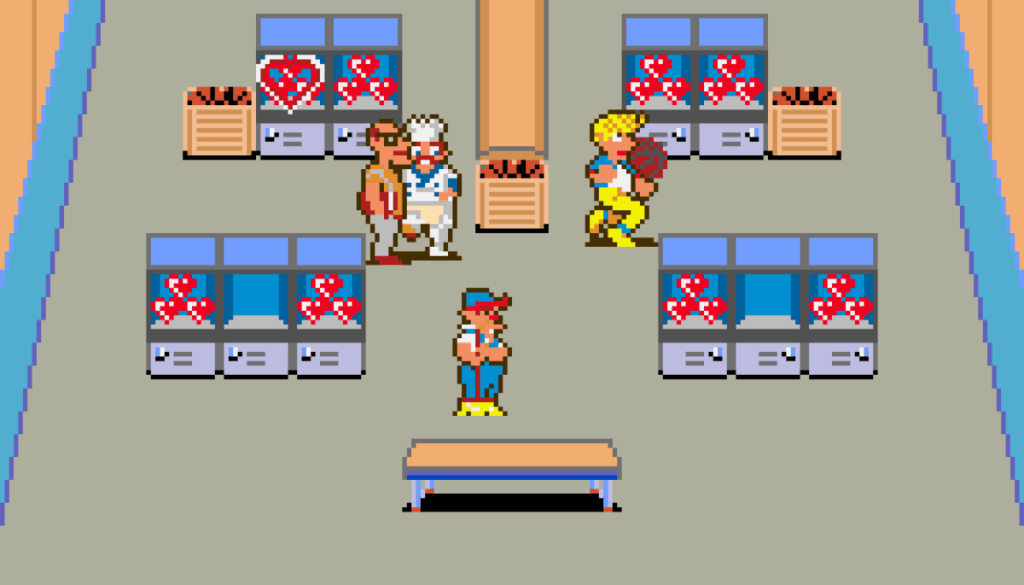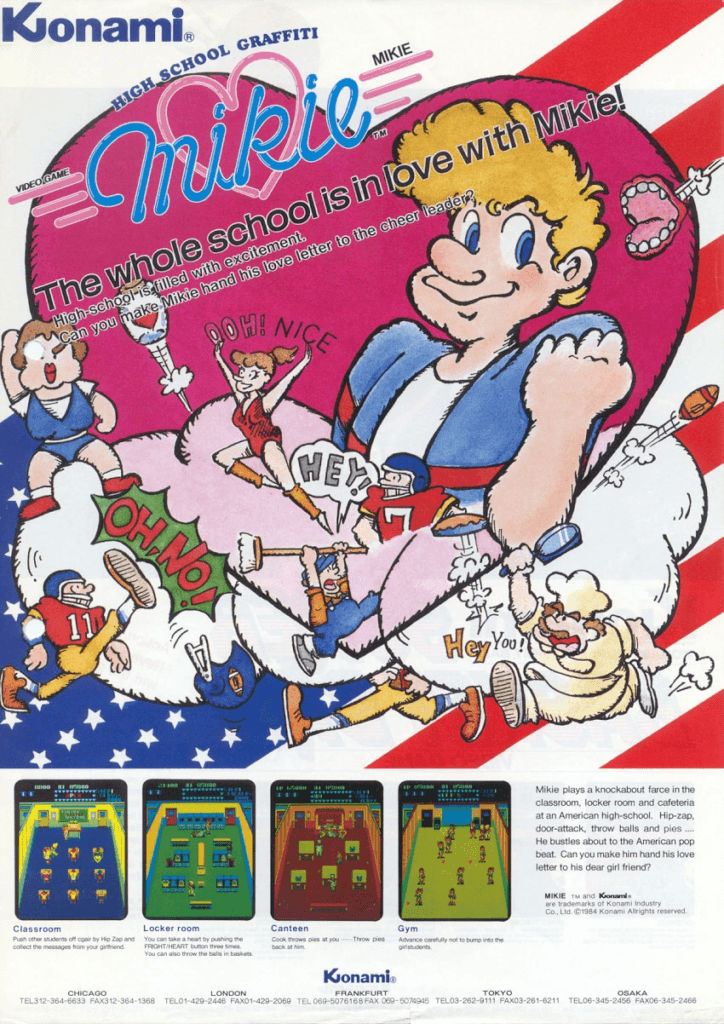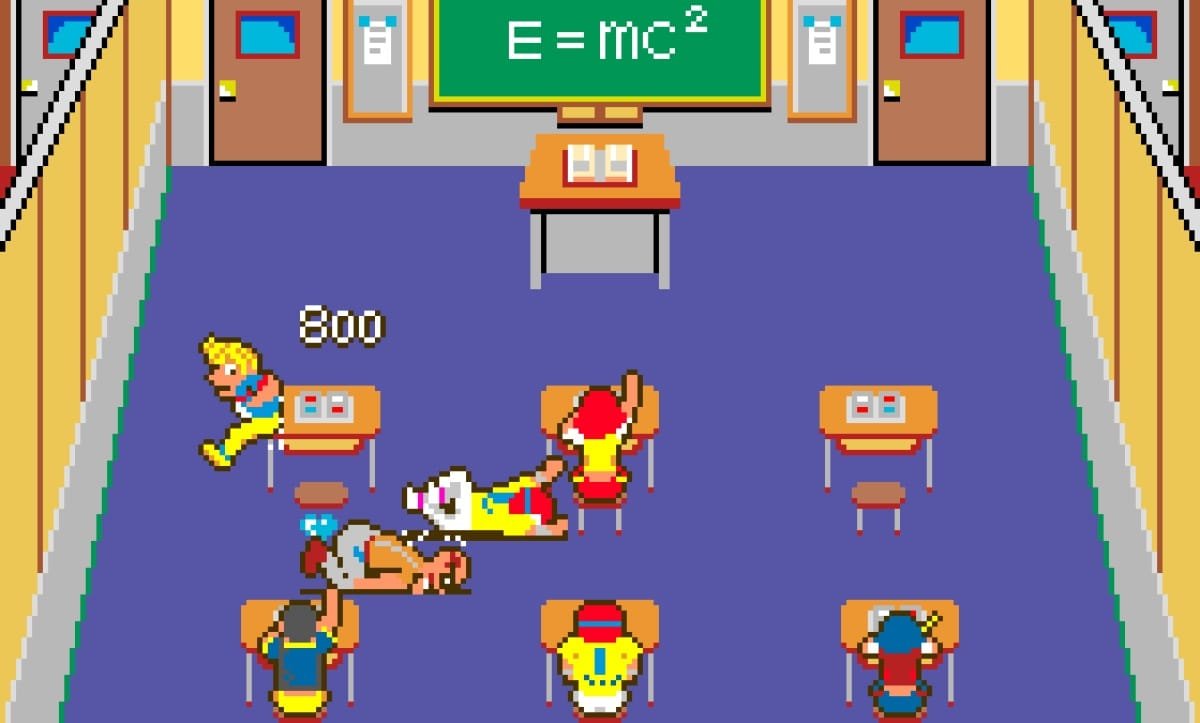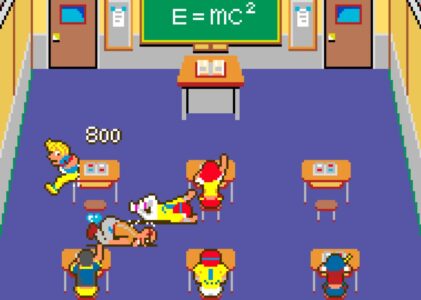Uncover the Secrets of Mikie: From Gameplay to Cultural Impact
If you’re a gamer looking for a blast from the past or simply curious about the evolution of video games, Mikie is a name that should pique your interest. This classic arcade game burst onto the scene in the early 1980s and left an indelible mark on the gaming landscape. In this comprehensive article, we will delve deep into the world of Mikie, exploring its genre, platforms, gameplay, key features, strategies, reviews, cultural impact, sequels, and similar games. Let’s embark on this nostalgic journey and relive the mayhem that is Mikie.
Mikie: The Genre-Defining Classic
Mikie, developed by Konami, falls into the genre of arcade action games. Released in 1984, it quickly became a sensation in arcades around the world. This genre was characterized by fast-paced gameplay, challenging levels, and a focus on high scores, making it a favorite among gamers of the time.

Platforms and Availability
Mikie was initially released as an arcade game, which meant you had to visit your local arcade to experience the adrenaline rush it offered. However, its popularity led to various platform adaptations, making it accessible to a broader audience. Some of the platforms on which Mikie found a home include:
- Arcade Cabinets: The original arcade cabinets were the birthplace of Mikie’s chaos. Its unique control scheme, featuring a joystick and two buttons, added to the charm of playing it in arcades.
- Amstrad CPC: Mikie made its way to the Amstrad CPC home computer system, bringing the arcade experience to the living rooms of gamers.
- Commodore 64: Commodore 64 users could also enjoy Mikie on their personal computers, providing hours of entertainment without the need for tokens or quarters.
- ZX Spectrum: This popular 8-bit home computer was yet another platform where Mikie’s charm could be experienced, allowing players to relive the arcade magic at home.
- Nintendo Entertainment System (NES): Mikie even graced the NES console, reaching a whole new generation of gamers and becoming a beloved title in the NES library.
Gameplay: Mayhem Unleashed
Now that we’ve set the stage, let’s dive into the heart of Mikie – its gameplay. At its core, Mikie is a game of mischief and mayhem, with players taking on the role of a high school student named Mikie. The objective? To navigate the school building, evade teachers and bullies, and collect hearts to win the affection of your sweetheart.
Mikie’s gameplay is divided into different school-themed levels, each with its own unique challenges. The game’s control scheme involves a joystick for movement and two buttons for actions – one for kicking and the other for opening doors. These simple controls belie the complexity of the challenges you’ll face.

In each level, Mikie must collect hearts scattered throughout the school while avoiding various hazards. These hazards include teachers who will chase you down if they catch you misbehaving, bullies who try to steal your collected hearts, and other obstacles like flying soccer balls and falling blackboards.
One of the standout features of Mikie’s gameplay is its emphasis on strategy and timing. To succeed, players must plan their route carefully, anticipate the movements of teachers and bullies, and use the environment to their advantage. It’s a game that rewards quick thinking and precise execution.
Key Gameplay Features: What Sets Mikie Apart
Mikie’s enduring popularity can be attributed to several key gameplay features that set it apart from other arcade games of its time:
- Varied Environments: Mikie’s levels are diverse, taking place in different parts of the school, including classrooms, hallways, and the gym. Each environment presents its own set of challenges, keeping the gameplay fresh and engaging.
- Interactive Elements: The ability to interact with objects in the environment, such as opening doors and kicking soccer balls, adds depth to the gameplay and allows for creative strategies.
- Multiplayer Option: Some versions of Mikie, like the Commodore 64 adaptation, included a two-player mode, allowing friends to join in the fun and compete for high scores.
- Time Pressure: Mikie is a race against the clock. Players must complete each level within a limited time frame, adding an element of urgency and excitement to the game.
- Power-Ups: Occasionally, players can pick up power-ups like apples, which grant temporary invincibility, providing a strategic advantage when dealing with teachers and bullies.
Strategies and Cheats: Unleash Your Inner Mikie Master
Mastering Mikie requires a combination of skill, timing, and a few well-guarded secrets. Here are some strategies and cheats that can help you conquer the schoolyard:
- Plan Your Route: Study the layout of each level and plan your route to collect hearts efficiently while avoiding enemies. Timing is crucial, so be prepared to backtrack if needed.
- Use Doors Wisely: Doors can be your best friend or worst enemy. Learn to use them strategically to block pursuing enemies or create shortcuts.
- Befriend the Gym: The gym level is notorious for its tough challenges. Collect as many hearts as possible before entering the gym, as it can be challenging to escape once you’re in.
- Master the Kick: Mikie’s kick move can be used to stun teachers and bullies temporarily. Use it wisely to create openings and make your escape.
- Watch for Patterns: Enemies often follow predictable patterns. Observe their movements and take advantage of their blind spots.
- Invincibility Power-Up: When you collect an apple power-up, make the most of it. This is your chance to dash through enemies and collect hearts without fear.
- Practice, Practice, Practice: Like any classic arcade game, Mikie rewards practice. The more you play, the better you’ll become at mastering its challenges.
Reviews and Cultural Impact: Mikie’s Enduring Legacy
Mikie received a warm reception from both gamers and critics upon its release. Its combination of humor, strategy, and fast-paced action made it an instant classic. The addictive gameplay and quirky premise endeared it to players of all ages.
In an era when arcades were at the height of their popularity, Mikie stood out as a must-play title. Players competed for high scores, and Mikie’s charm led to countless hours of gameplay.
While Mikie might not be as well-known today as some other classic arcade games, it holds a special place in the hearts of those who experienced it during its heyday. Its influence can be seen in later arcade classics like “BurgerTime” and “Mappy,” which shared a similar blend of action and strategy.
Sequels and Examples of Similar Games
Although Mikie never spawned a long-running franchise, its unique gameplay and character left an indelible mark on the gaming world. While there are no direct sequels to Mikie, several games share similarities in terms of gameplay and style. Here are a few notable examples:
- BurgerTime: Like Mikie, “BurgerTime” is an arcade classic that combines action and strategy. Players control a chef who must assemble burgers while avoiding pursuing food items.
- Mappy: “Mappy” is another arcade game that features a cute protagonist navigating levels filled with hazards. Instead of collecting hearts, players control a mouse cop who retrieves stolen goods.
- Donkey Kong: This iconic arcade game features a hero, Jumpman (later known as Mario), who must rescue a damsel in distress while navigating a series of platforms and avoiding obstacles.
- Pac-Man: While “Pac-Man” is primarily a maze-chase game, it shares the arcade sensibilities and addictive gameplay that made Mikie a hit.
In conclusion, Mikie remains a beloved classic in the world of arcade gaming. Its unique blend of strategy, action, and humor has left a lasting legacy, even as the gaming industry has evolved. Whether you’re a retro gaming enthusiast or simply looking to explore the roots of gaming, Mikie is a title that deserves a place in your gaming history.
For those lucky enough to have experienced Mikie in its prime, it’s a trip down memory lane. For the new generation of gamers, it’s a chance to discover a gem from the past and appreciate the simple yet captivating gameplay that made Mikie a timeless classic.
So, dust off your joystick, grab a virtual hall pass, and get ready to join Mikie on a journey filled with mischief, mayhem, and unforgettable gaming moments.
For more classic gaming adventures and insights, be sure to explore the world of arcade legends and discover the timeless treasures of gaming’s golden age.
Note: Mikie may not be available on all modern gaming platforms, but various emulators and collections make it possible to experience this classic on contemporary hardware.
References:













